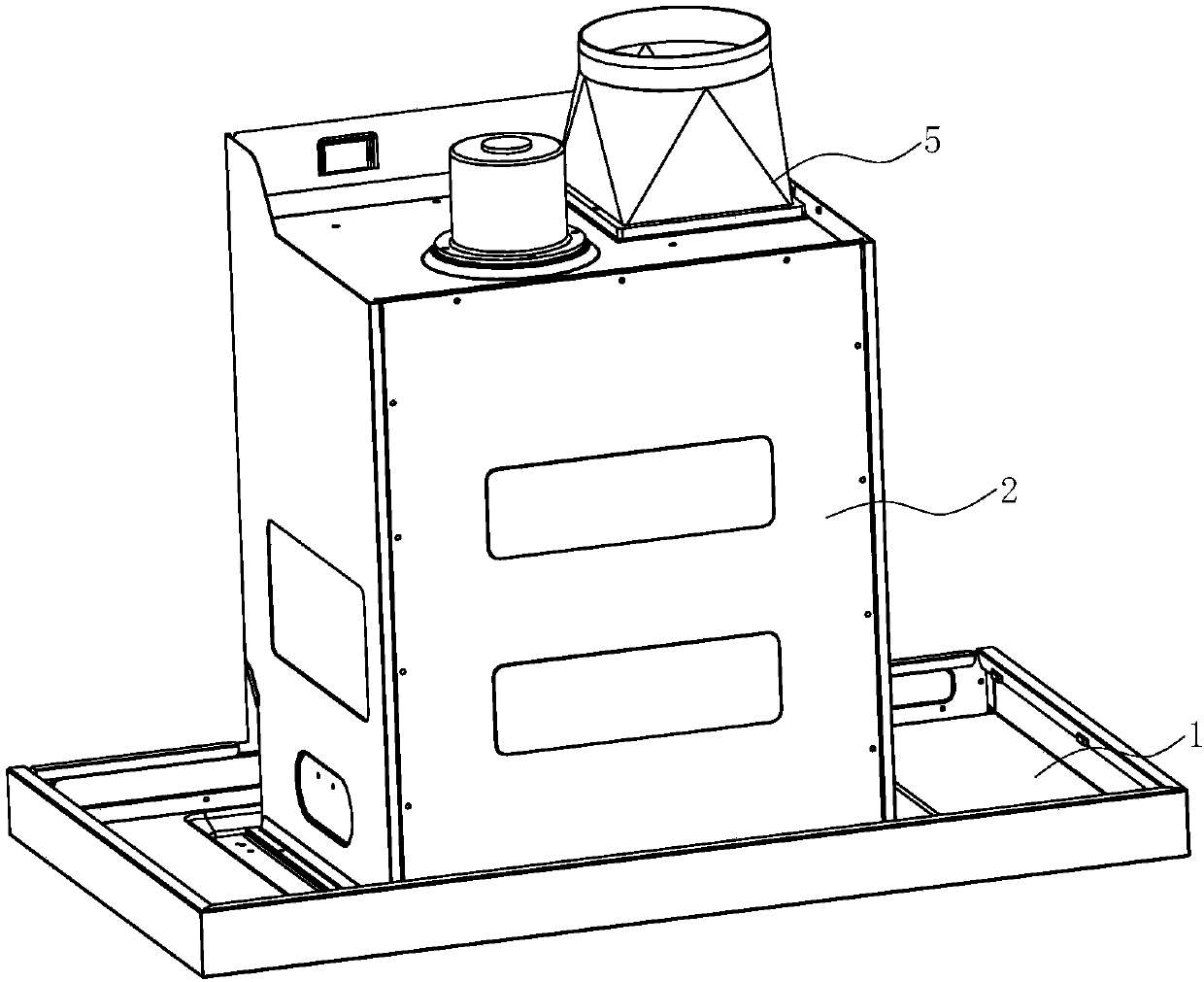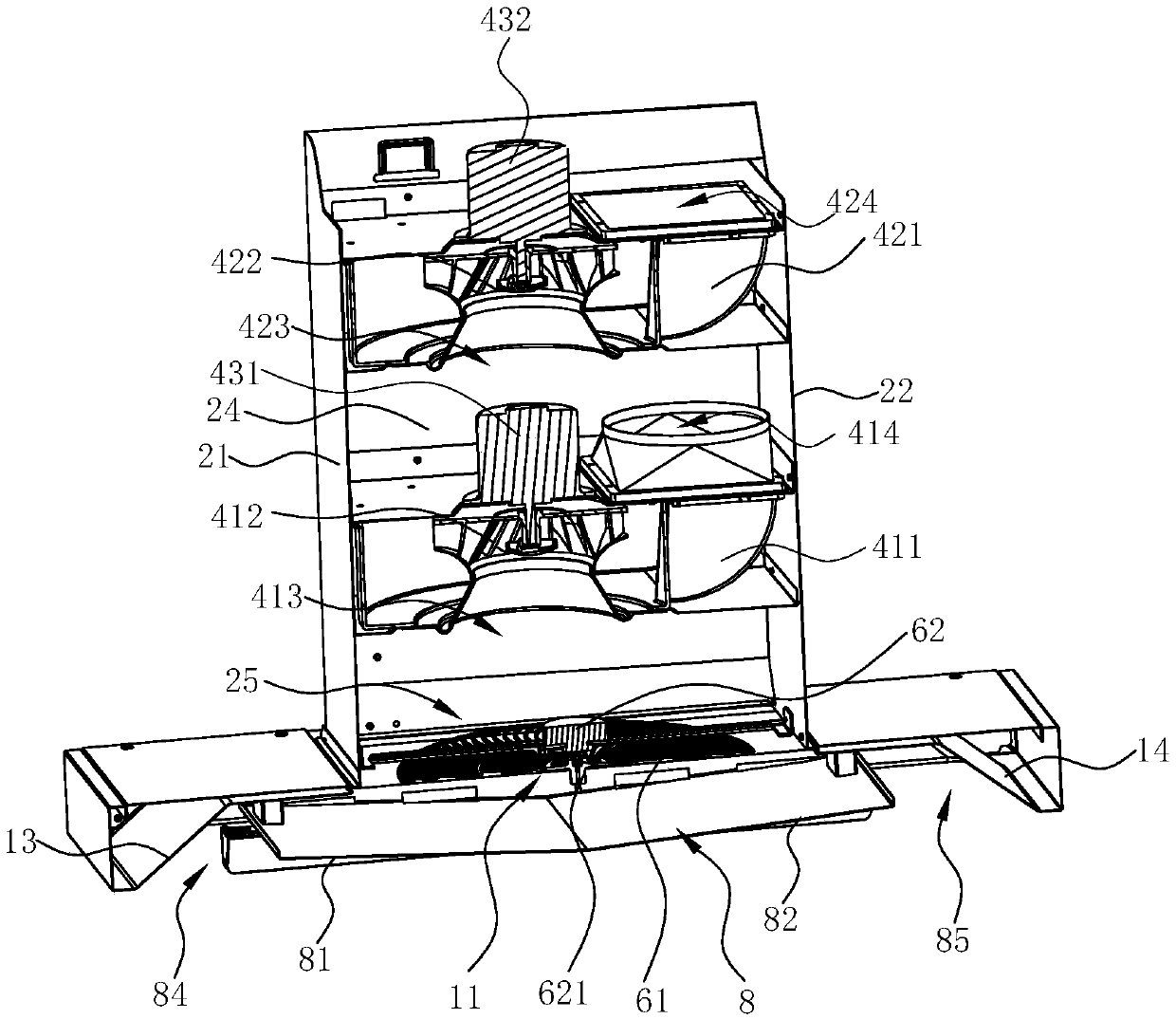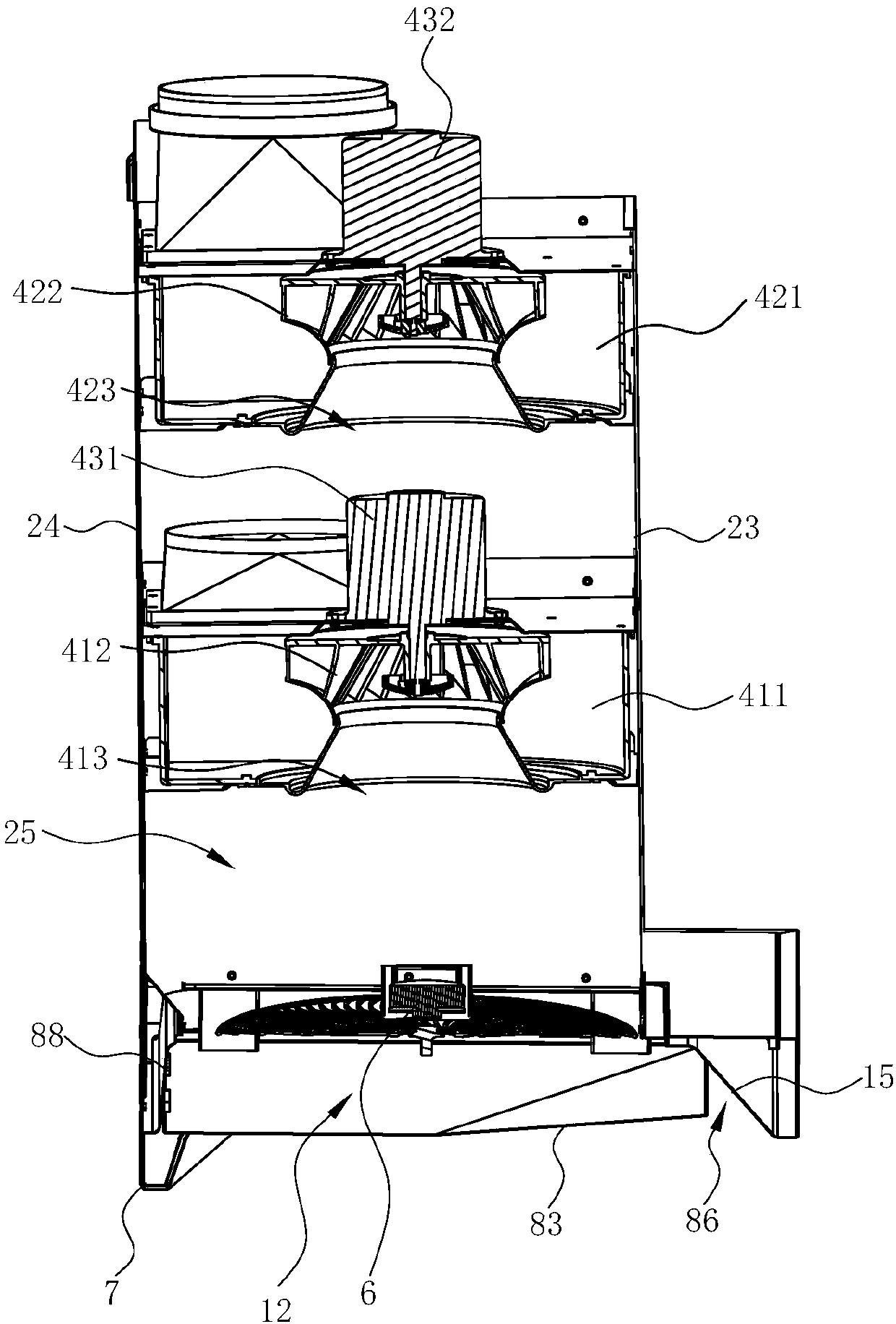Extractor hood
A technology of range hoods and cabinets, applied in the field of kitchen appliances, can solve the problems of short paths, inability to maximize the effect of rotating filter airflow, and large wind resistance, so as to achieve large negative pressure gradients, improve the effect of range hoods, The effect of improving smoking efficiency
- Summary
- Abstract
- Description
- Claims
- Application Information
AI Technical Summary
Problems solved by technology
Method used
Image
Examples
Embodiment 1
[0032] see Figure 1 ~ Figure 4 , a range hood, comprising a smoke collection hood 1, a chassis 2 arranged above the fume collection hood 1, a fan system 4 is arranged in the chassis 2. An air inlet 11 is provided on the fume collecting hood 1, so that the fan system 4 in the cabinet 2 can suck oily fume into the cabinet 2 through the air inlet 11 and discharge it to the public flue.
[0033] The cabinet 2 includes a left side wall 21, a right side wall 22, a front side wall 23, and a rear side wall 24. The cavity between the above-mentioned side walls forms an air duct 25 for the oil fume flow. Preferably, the air duct 25 gradually moves from bottom to top. zoom out.
[0034] In this embodiment, the blower system 4 is a three-way blower, and the three-way blower can adopt the existing technology, as disclosed in the Chinese patent application number 201310418009.X. The fan system 4 can be a single ternary fan, two parallel ternary fans or two series ternary fans. Since the ...
Embodiment 2
[0055] see Figure 7 with Figure 8 , in this embodiment, the difference from the third embodiment above is that the first ternary fan 41 (as the first-stage fan) and the second ternary fan 42 (as the second-stage fan) are arranged in a misplaced position, that is, the second The first volute 411 and the second volute 412 are opposite, the first air inlet 413 of the first three-way fan 41 is close to the right side, the second air inlet 423 of the second three-way fan 42 is close to the left side, and the first three-way fan 41 is close to the left side. The second air outlet 414 of fan 41 is close to the left side, and the second air outlet 424 of the second three-way fan 42 is close to the right side. The second air inlet 423 corresponds or nearly corresponds in the vertical direction. The distance between the first air inlet 413 and the second air inlet 423 is the distance in the vertical direction.
Embodiment 3
[0057] see Figure 9 with Figure 10 , in this embodiment, the difference from the third embodiment above is that the first three-way fan 41 and the second three-way fan 42 are arranged at intervals above and below, respectively, that is, the first inlet of the first three-way fan 41 The air outlet 413 faces downward obliquely with the horizontal direction, and the second air inlet 423 of the second three-way blower 42 faces downward obliquely with the horizontal direction.
[0058] The first air outlet 414 of the first three-way fan 41 is connected to the second air inlet 423 of the second three-way fan 42 through an air duct 46 . The vertical distance between the center of the first air inlet 413 of the first three-way fan 41 and the inlet of the air duct 25 is 0.5-2 times the diameter of the first three-way impeller 412 .
[0059] This kind of oblique series connection method makes the overall height of the fans lower and the static pressure at the fan outlet is larger, w...
PUM
 Login to View More
Login to View More Abstract
Description
Claims
Application Information
 Login to View More
Login to View More - R&D
- Intellectual Property
- Life Sciences
- Materials
- Tech Scout
- Unparalleled Data Quality
- Higher Quality Content
- 60% Fewer Hallucinations
Browse by: Latest US Patents, China's latest patents, Technical Efficacy Thesaurus, Application Domain, Technology Topic, Popular Technical Reports.
© 2025 PatSnap. All rights reserved.Legal|Privacy policy|Modern Slavery Act Transparency Statement|Sitemap|About US| Contact US: help@patsnap.com



